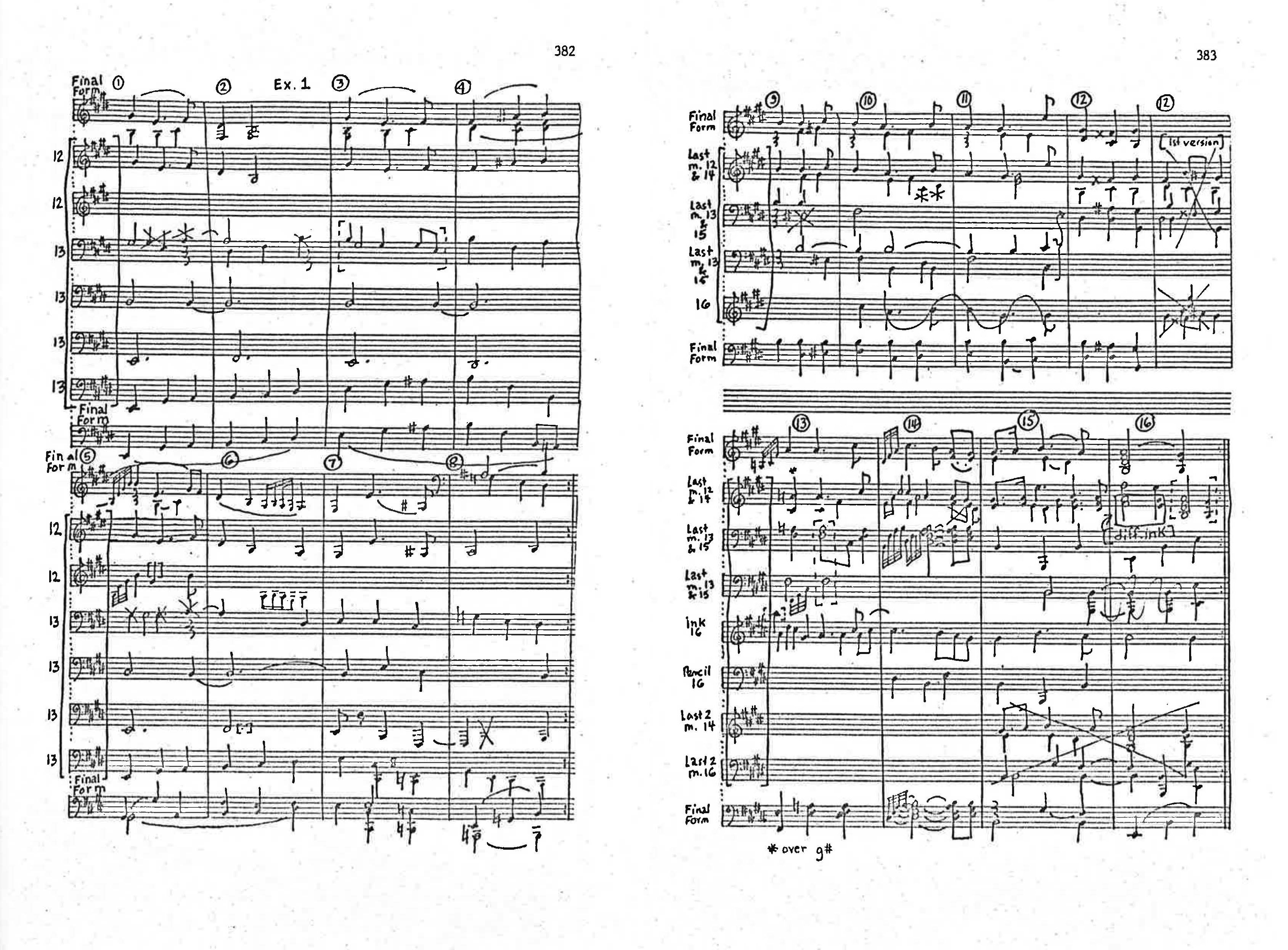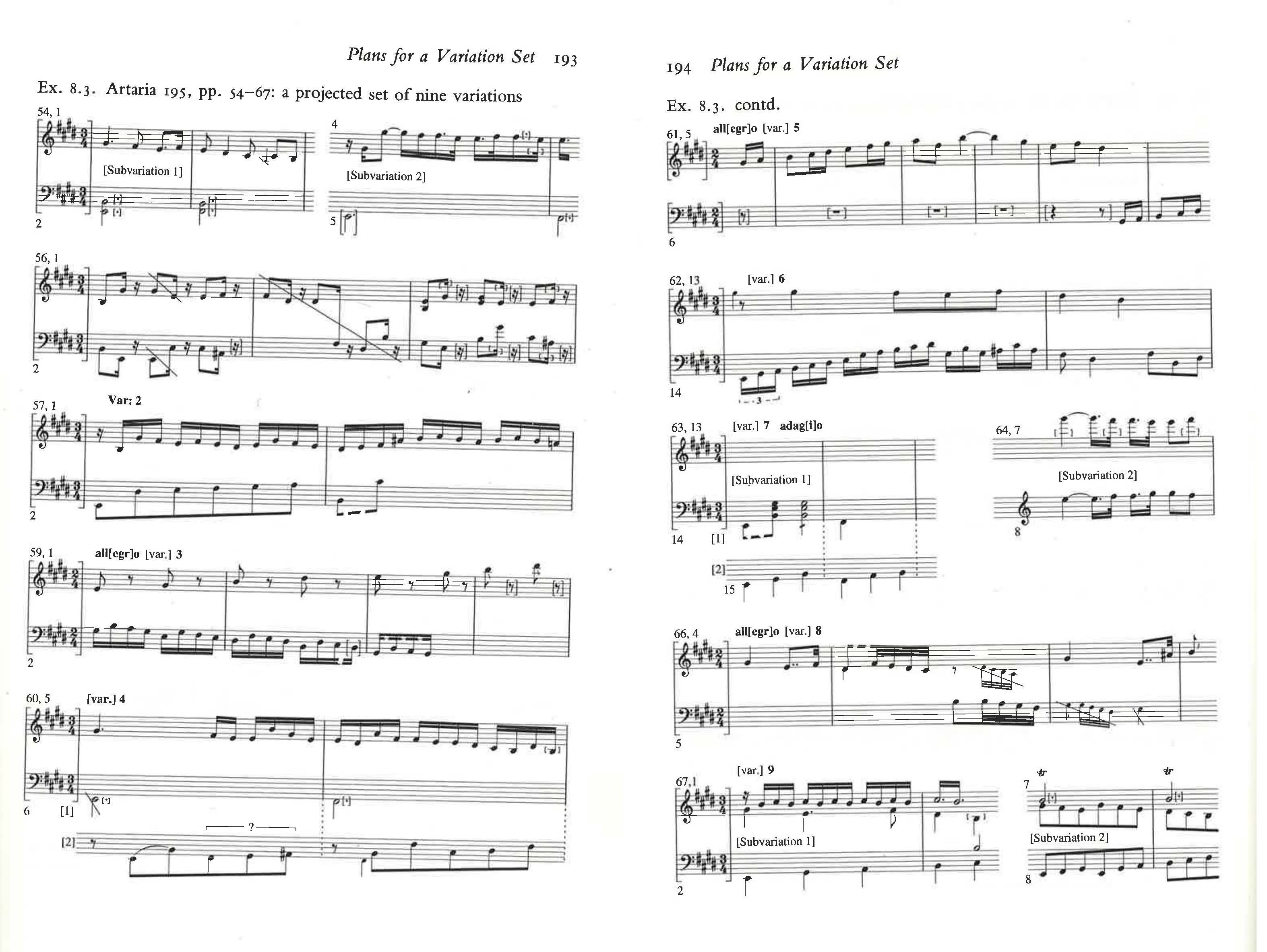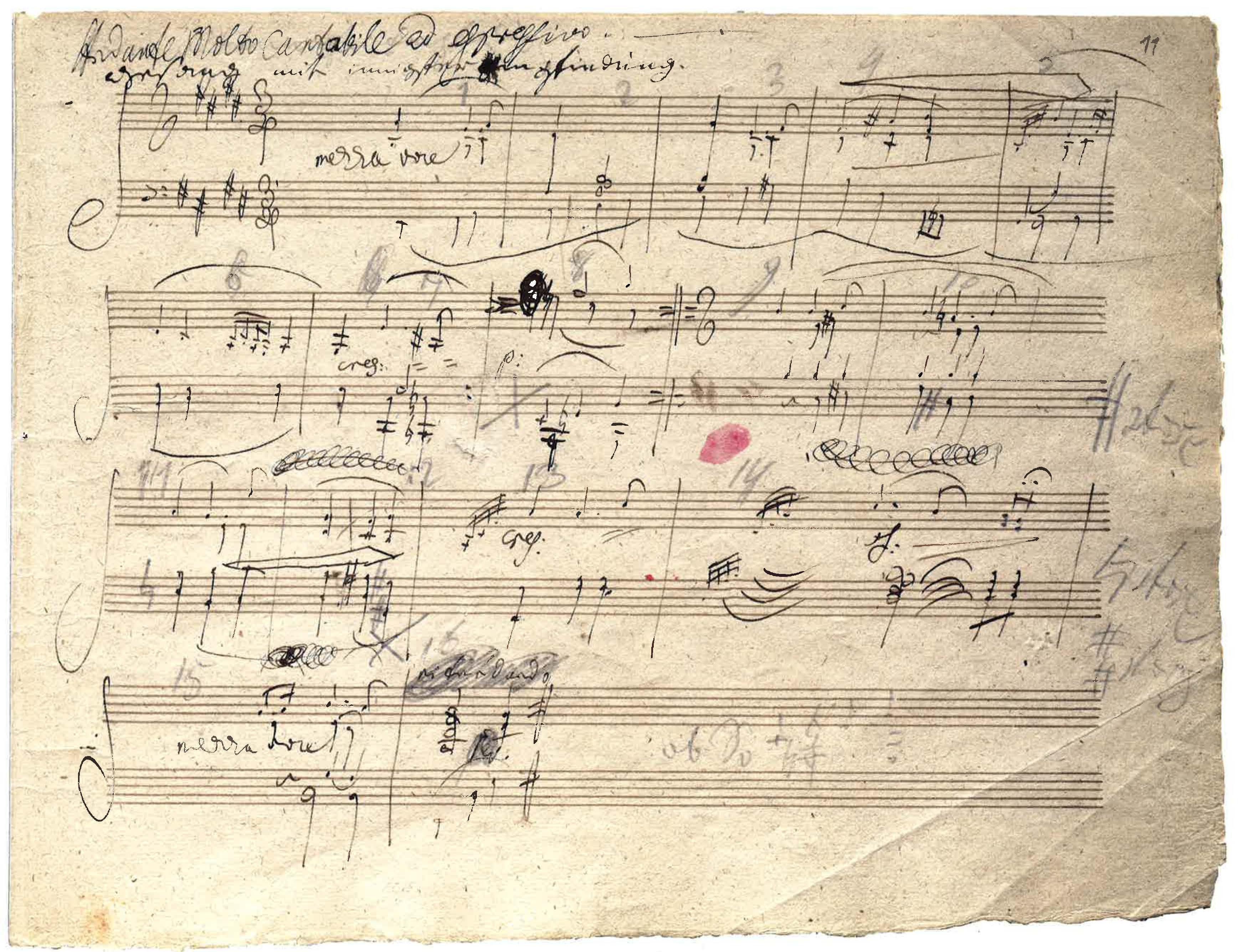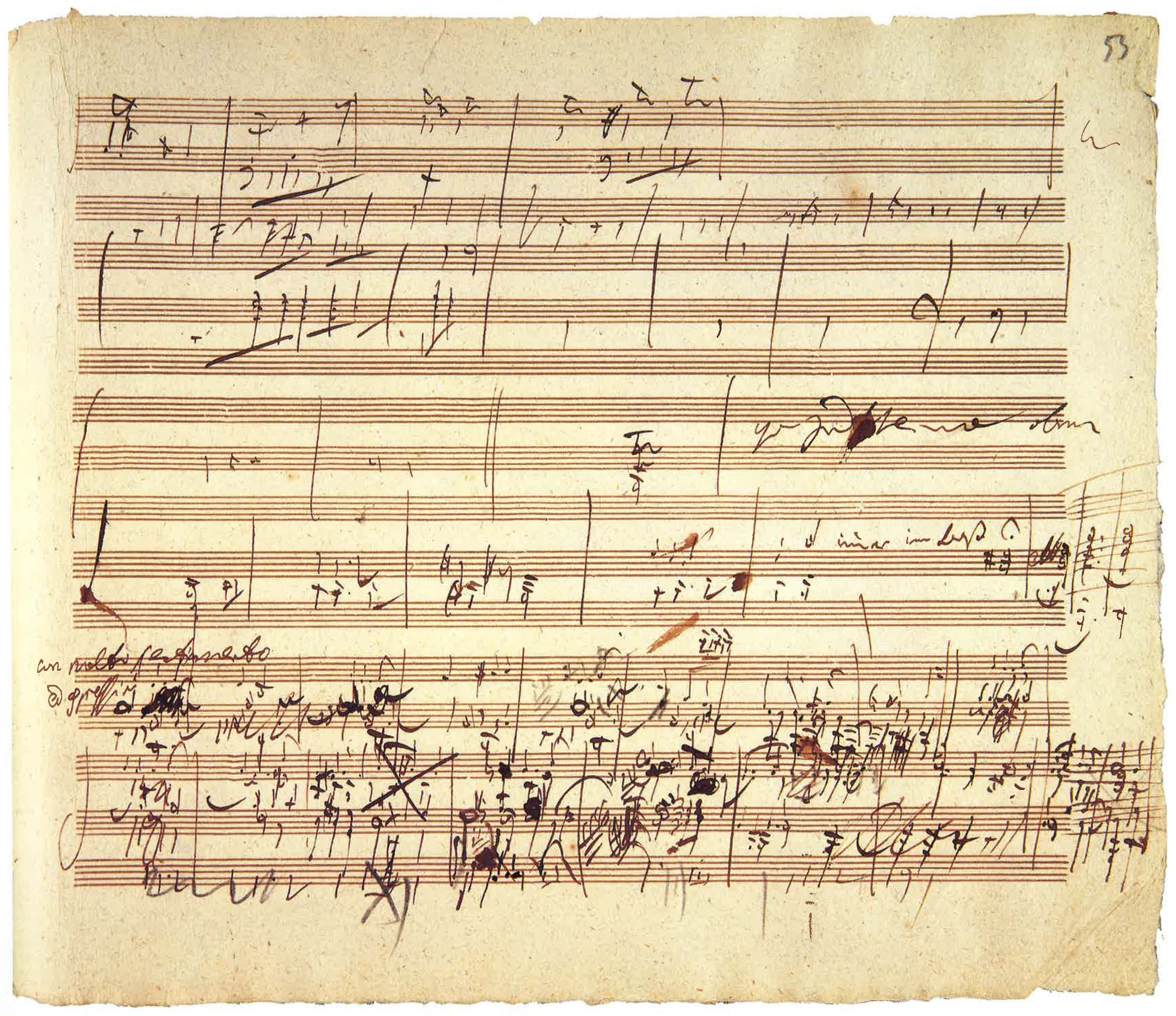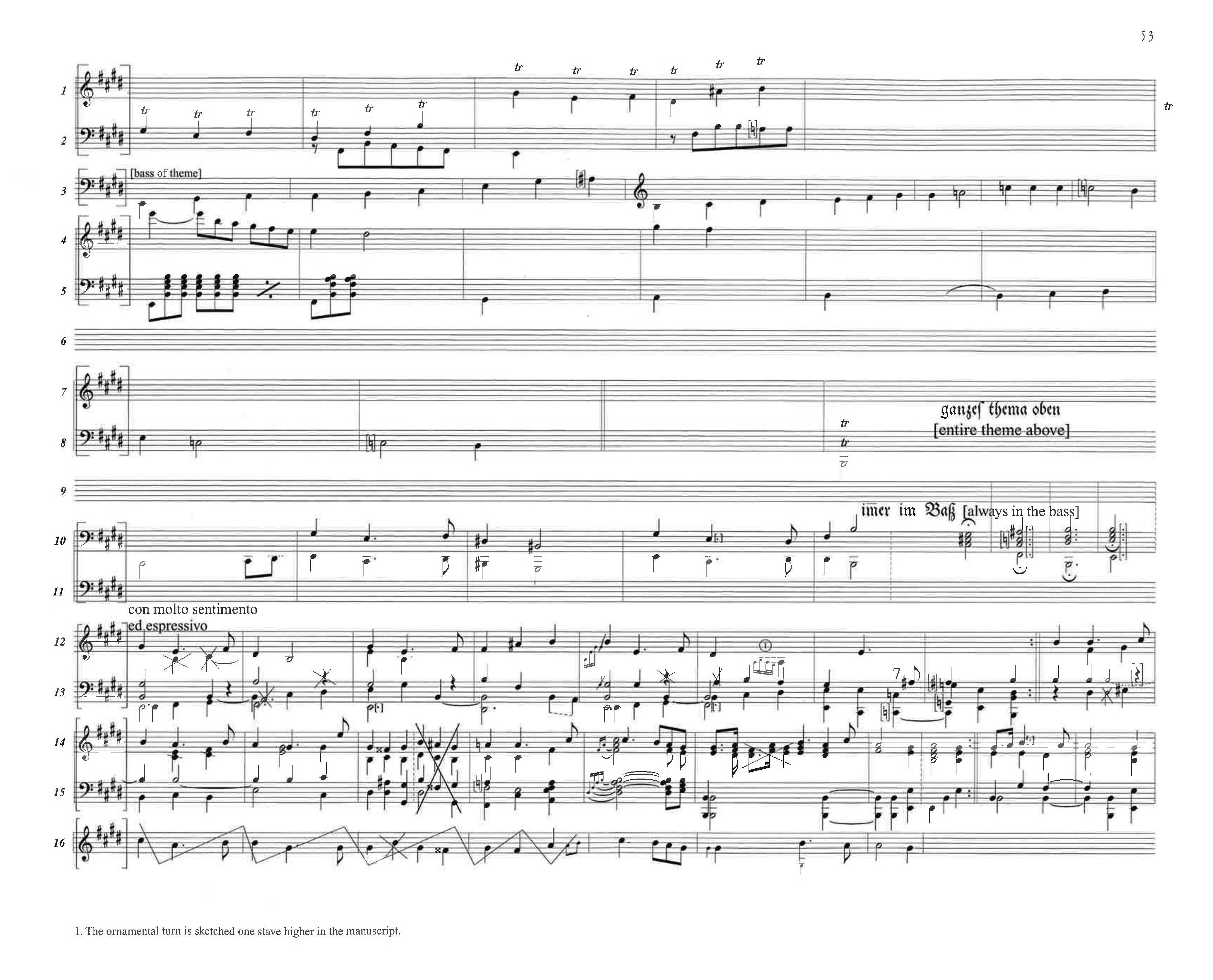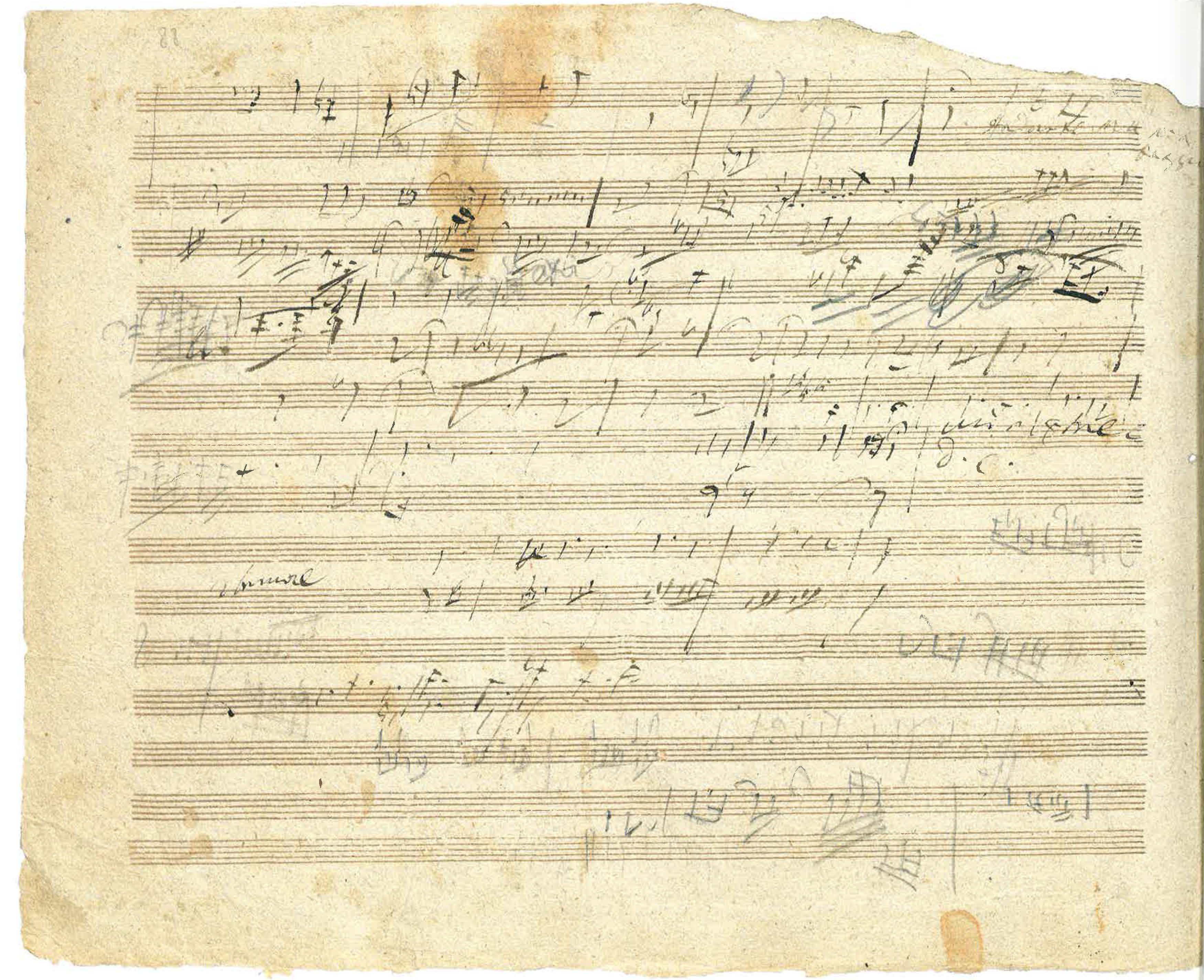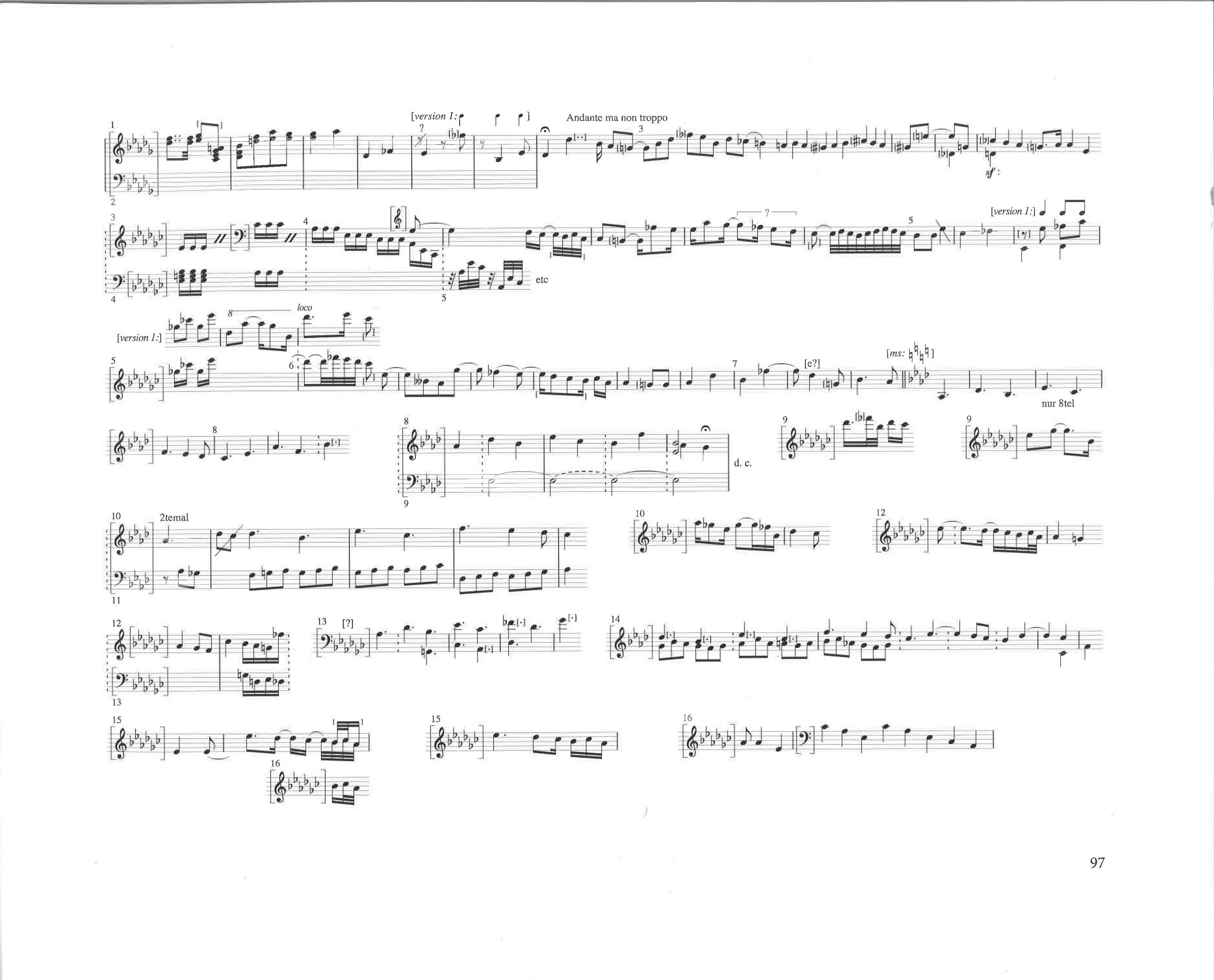Case 3
The two pages from William Rhea Meredith’s 1985 dissertation (above) provide a disentangled illustration of the densely layered content that makes up one of two extant sketches for the theme of the final movement from Beethoven’s Op. 109. The final form of the theme is given on the top and bottom stave of each system, while the different versions of the right and left hands as they appear in the sketch are given in between. While the basic framework for the theme seems to have been determined when Beethoven endeavoured to sketch the theme here, numerous minor alterations were made that vary what Meredith refers to as the ‘surface energy.’ Consider, for example, Beethoven’s deliberation between stepwise motion and leaps in the two versions of m. 12, where the crossed-out version is much more active as a result of the fourth leaps in both hands.
The selection below from Nicholas Marston’s comprehensive sketch study for Op. 109 includes examples from the pages that follow the sketch of the theme in Artaria 195. When sketching variations, Beethoven would often first write out all of the bar lines in advance of the sketching before then writing only a short incipit at the beginning of the predetermined space for the variation. Numerous plans for variations were conceived in the sketches, though only six appear in the final version. By comparing the dominant elements of each variation included in Marston’s figure with the original theme, one can get the sense for the features of the theme to which Beethoven gravitated as potential candidates for elaboration.
Kinderman, William, ed. Artaria 195: Beethoven’s Sketchbook for the “Missa solemnis” and the Piano Sonata in E Major, Opus 109. Vol. 3: Transcription. Urbana: University of Illinois Press, 2003. p. 53.
Beethoven’s sketching practices for variation sets differed considerably from the way he approached other musical forms. Because the main theme would serve as a kind of repository of material from which musical ideas might be extracted and altered for use in separate variations, the first step for Beethoven when sketching these sets was to work out a relatively precise and complete idea of this main theme. Much of the planning for the theme from the third movement of Op. 109 appears at the bottom of p. 53 in the Artaria 195 sketchbook. The numerous revisions show a keen attention to detail at a relatively early stage in the development of the movement, though the overall framework of the theme seems to have been determined early in the process of notating this sketch. When compared with the autograph score, also shown here, it is apparent that most of the final organizational features, on scales both large and small, appear in this one sketch of the theme. There are, however, some differences between the sketch and the autograph, such as the change in marking from ‘con molto sentimento ed espressivo’ in the sketch to ‘Andante molto cantabile ed espressivo’ in the final version.
Beethoven’s work with vocal forms for Missa solemnis influenced his approach to composing for the piano, exemplified most clearly in the last movement from Op. 110. The final page from the Artaria 197 sketchbook, shown here, follows a series of fragmentary sketches of different elements for the ‘vocal’ portion of the movement, namely the opening adagio and recitative, as well as the arioso. Many of the elements that appear in the final version are present, though a number of differences are notable. For example, the introductory adagio is notated in 2/4 in the sketch, a metric designation which is consistent throughout the sketchbook,
suggesting a relatively late shift to the 4/4 that appears in the final version. Where Beethoven writes a series of ornamental pitches (A-B-A-G#-A-B-C#-B-A) on the third stave in the sketch, corresponding to what would be m. 5, he would later decide on a prolonged B7 chord over which is non-metrically repeated A5 in the fashion of a Baroque clavichord accompanist who freely improvises between recitative statements.
